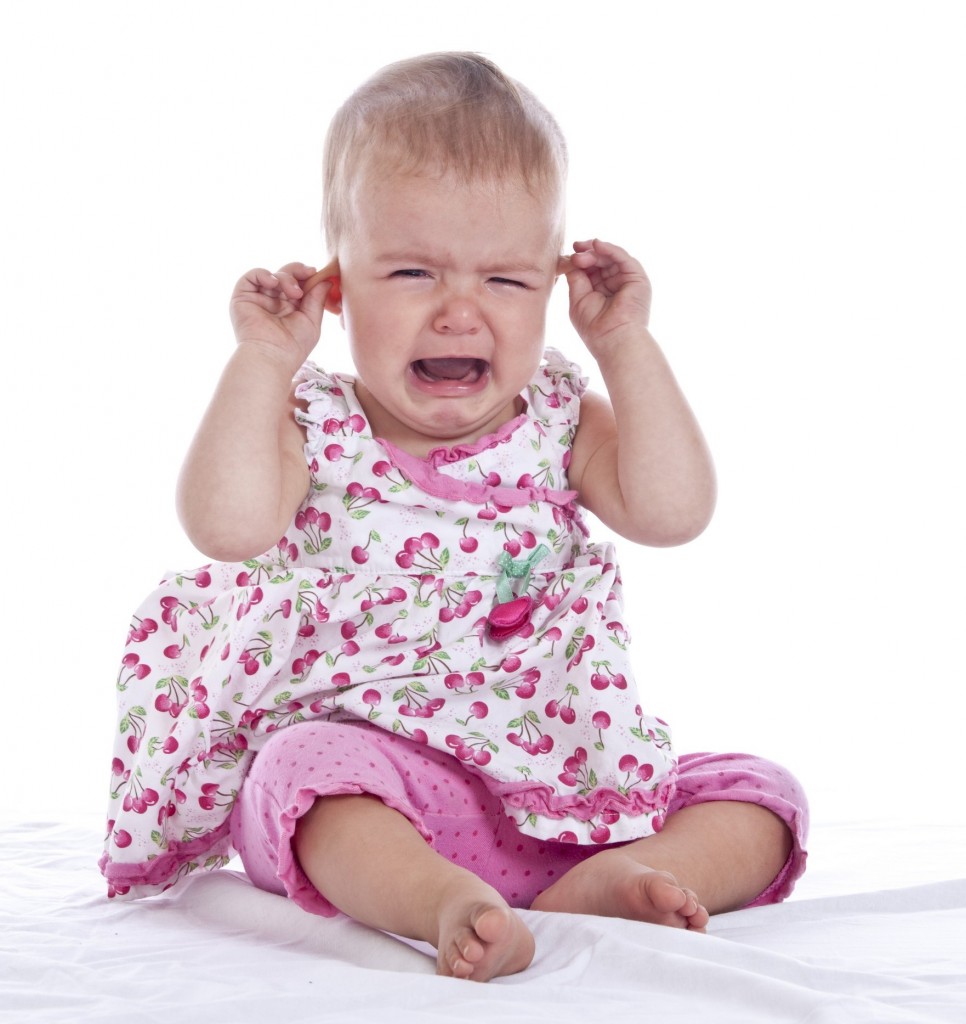I learned something recently about ear infections that I think is worth sharing. If your child seems to have one right after another, or if his/her ears are frequently filled with fluid, the problem may be related to allergies says ear, nose, and throat specialist Dr. David Hurst. He devoted much of his career researching why some children have repeated ear infections and recently published a book titled Freedom From Chronic Ear Infections: The Role of Allergies and the Way to a Cure.
According to the National Institutes of Health, three out of four children will have an ear infection by the time they are three years old — the medical term is otitis media. Acute ear infections often go away on their own in two or three days with little or no treatment, yet antibiotics are prescribed for them more than for any other infection. Partly because of concern that overprescribing can lead to antibiotic resistance, the American Academy of Pediatrics established evidence-based treatment guidelines for an otherwise healthy child with an ear infection:
- Make an accurate diagnosis
- Relieve pain
- Wait 48-72 hours to see if infection resolves on its own. If child doesn’t improve, start antibiotics
- Prescribe antibiotics without waiting if determined that child is likely to benefit
- When antibiotics are used, prescribe amoxicillin for most children
Chronic ear infections and ear tubes
If a child gets repeated infections and antibiotics don’t seem to help, the doctor may recommend ear tubes. Ear tubes are little metal or plastic cylinders that are surgically inserted into the eardrum. They are meant to provide a way for air to get into the ear and prevent fluid from building up inside.
In his book, Dr. Hurst states that in the first ten years of his practice he noticed, “some patients kept coming back for their third, fourth, and even a fifth set of tubes. Something was clearly not working, but I noticed a pattern: many of these patients also had allergies. Some had continual runny noses and/or asthma.”
Ear tubes versus allergy treatment — a study
Dr. Hurst decided to conduct his own clinical study. He offered 20 patients, each of whom had tested positive for allergies and were in need of a third set of tubes, the option to either replace the tubes or try allergy treatment.
“Three chose no treatment and their ears remained full of fluid,” he reports. “In six patients whose allergies were treated for a time, the fluid cleared, but as soon as they quit their allergy shots or they ate foods that made them congested, their ears filled up again, so I judged the treatment to have failed. Eleven maintained their allergy treatment for a full three years and remained free of middle ear fluid.”
His findings were published in 1990 in Otolaryngology — Head Neck Surgery and started him on the path to further research. As he writes in his book, “It seemed to me that if we could understand the WHY, then we would know better WHAT to do.”
A point that he tries to make clear is that he’s not saying ear infections should never be treated with antibiotics or that ear tubes are never necessary. What he is saying is that you should suspect allergies when:
- Fluid in the ear has persisted more than two months
- The child has tubes that continually drain
- The child has a hole in the ear drum that drains
- The child has failed a school hearing test and has no history of ear infections
Understanding the allergy connection
If you have an allergy, when you are exposed to an allergen the mucous membranes in your nose and upper airways will become inflamed and swollen, making it difficult to breathe. The same allergic reaction can occur in the lining of the Eustachian tube, which leads from the back of the throat to the middle ear. When that happens, says Dr. Hurst, it causes fluid to build up behind the eardrum.
So, what should you do if you suspect allergies may be at the root of your child’s chronic ear problems? Dr. Hurst’s recommendation is to ask your child’s doctor to screen for 12 potential allergens:
- Dust mites (two)
- Cats
- Dogs
- Grass
- Trees
- Ragweed
- Molds (at least two)
- Milk
- Corn
- Soy
- Wheat
It happens that one of my daughters had chronic ear infections and ended up having a set of tubes put in when she was three. About 20 years later, she tested positive for allergies to cats and dust mites. Perhaps we could have avoided the tubes, the repeated infections, and the build up of fluid if we’d realized then that she had allergies. Let me add that she also had some hearing issues as a young child because of the fluid in her ears.


Leave A Comment